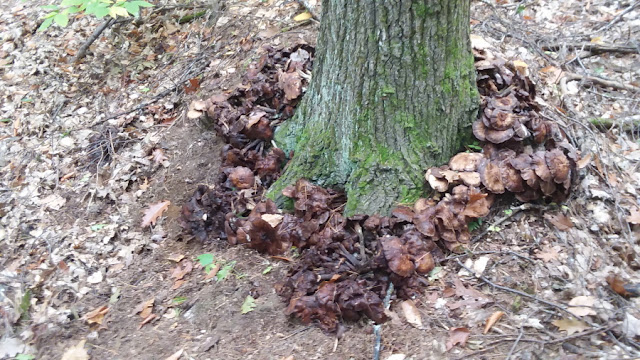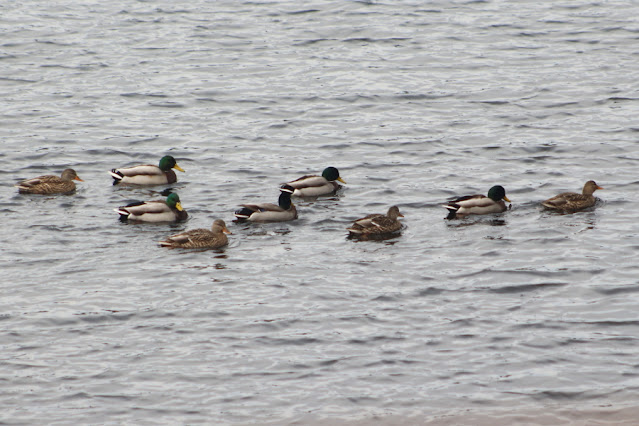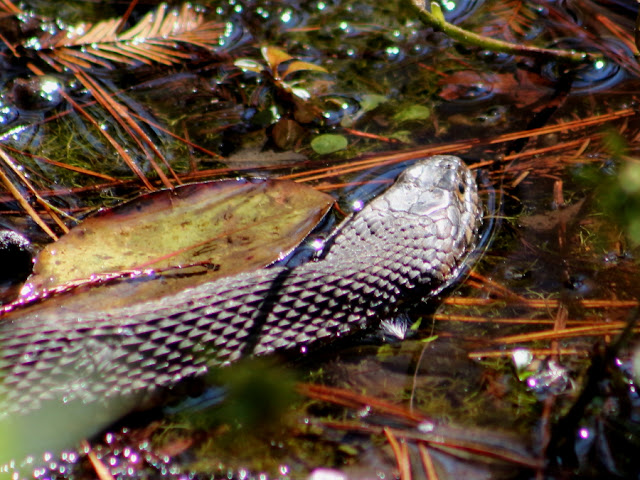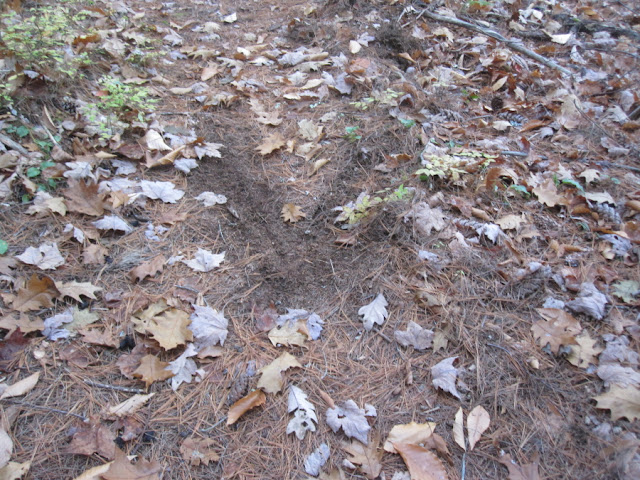A few weeks ago (See October 24 post) I noted a huge growth of mushrooms surrounding an oak tree on the trail up to Crockett's Ledge in the Hamlin town forest. I looked into what kind of mushroom it was and I believe it's a Honey Mushroom. I've been fascinated with mushrooms and fungi in general since I learned about the essential role they play in life on earth - without fungus living in the soil and feeding plants including the tallest trees in the forest, there would be no plant life as we know it. Now when I see the fruit of some fungus reaching up above the soil I think about what's going on down below where the vast majority of the organism is working to break down materials into nutrients they feed to the roots of plants. But looking up information about the honey mushroom I learned there is also a dark side to fungi, and the honey mushroom is one of the evil ones.
 |
| A small growth of honey mushrooms wreaking havoc on this hemlock. |
Rather than decomposing residual material in the soil, the honey mushroom attacks the living roots of the host tree - thus they are often found ringing the trunk of tree, commonly oak.
 |
| This is the crop of honey mushrooms that got my attention earlier this fall. |
As the fungus eats away at the roots it may kill them completely or weaken them to the point that they can no long support the tree and it's uprooted by the wind. Even worse, like most fungi the honey mushroom sends out threads underground for several meters which allow it to spread to other trees. This is one mushroom worth watching for; it can be controlled by an arborist using a fungicide.
Another danger to watch for - particularly this time of year while they are hungrily on the prowl to fatten up their winter stores - are bears. The current issue of NH Fish and Game Wildlife Journal has a good article about the danger of feeding animals both intentionally and unintentionally and how it leads to their demise. The focus is on deer and explains how feeding them interrupts their digestive system because it takes ungulates two weeks for their multiple-stomach system to adapt to new food. This resulted in the death of 12 deer in South Hampton when they ate corn and other grains that their system wasn't prepared for.
Another well known animal impacted by human food is the black bear. Being omnivores, bears can digest most human food (but not chocolate!) so the issue isn't the food itself but rather the interaction with humans. And it's not safe to put those bird feeders out yet - Harry Clymer sent me these photos of three black bears foraging through his yard for apples:
 |
| A black bear harvesting apples. Photos by Harry Clymer. |
The bears will be out until we get a good cold stretch, which at the moment is nowhere in sight. The article discusses both of these animals' plight from human interaction; if Fish and Game posts the article on their website I'll share it.
On the water, we haven't seen many of the interesting migrating ducks yet but a lot of mallards have been stopping by the lake. On Thanksgiving we had a flock of about a dozen mallards swimming around and dredging up acorns from the bottom of the lake where overhanging oak trees dropped their seeds in preparation for the ducks' Thanksgiving Day feast.
 |
| Part of the fleet on Thanksgiving Day. |
 |
| Could this be one of our loon chicks? |
I wish there were a way to tell whether this is one of our chicks or a visitor from another lake.
One last nature note: On Thursday we watched a pretty bobcat prowling all the way down along the far side of the road - I'm sure it was in search of a turkey dinner. I hope you had a great Thanksgiving Day - without having to scour the forest or dive in the lake for your meal!


















































